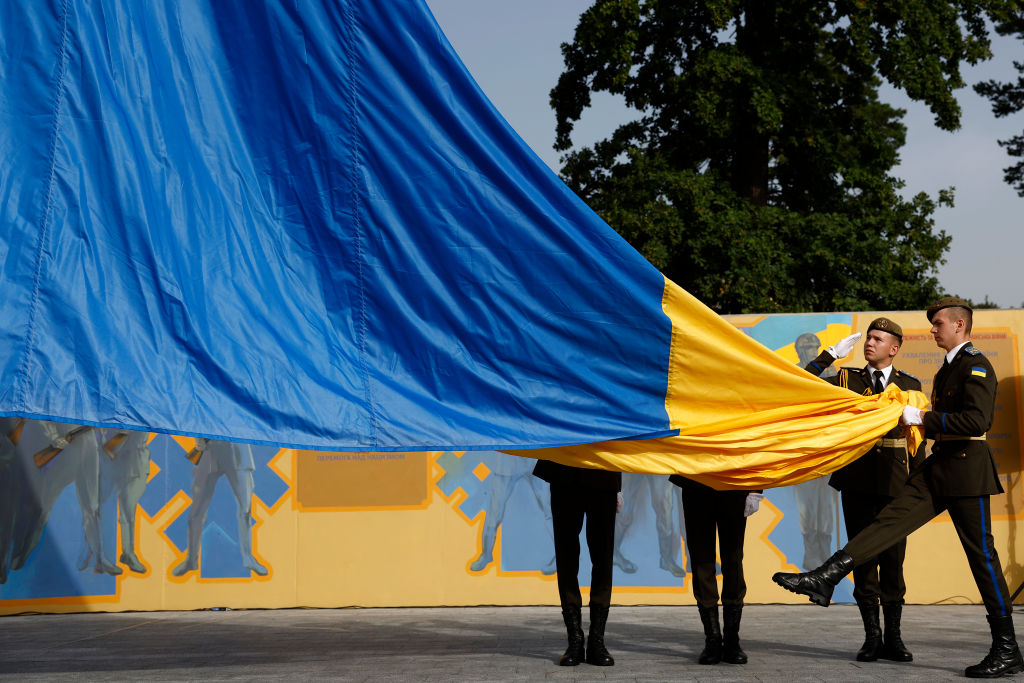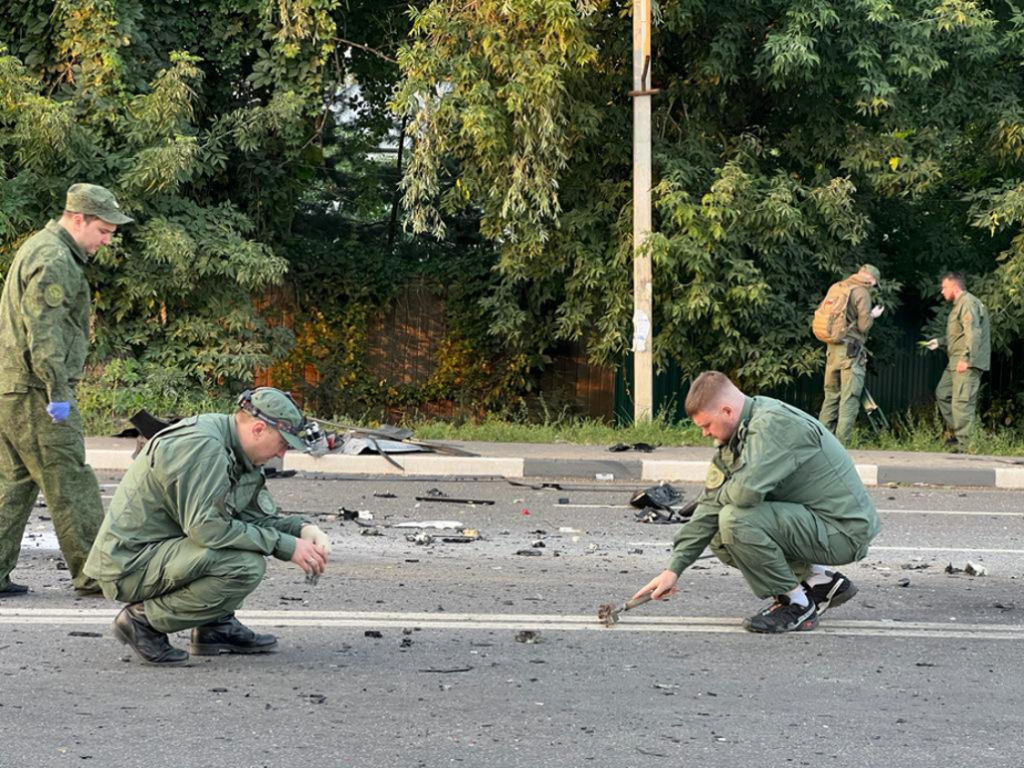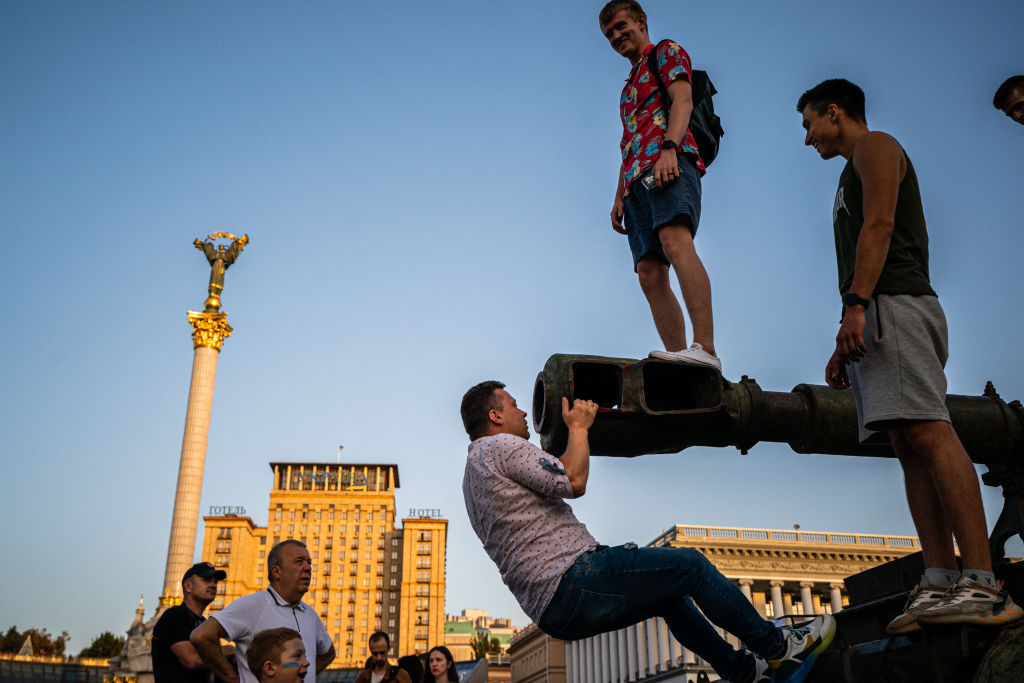
For the last seven years, no matter where in the world she found herself, Maria Romanenko always came home to Kyiv for Ukraine’s Independence Day on Aug. 24.
Last year, which marked three decades since the nation broke away from the Soviet Union, Romanenko and her friends managed to secure a prime spot by the city’s Independence Square to watch a grand military parade including a flypast by the Antonov AN-225—the world’s largest aircraft—whose cult status earned the Ukrainian nickname Mriya, meaning “dream.”
“Even if I couldn’t make the parade itself, I always made sure to follow on television or the internet,” says Romanenko, 30, a freelance journalist. “When somebody tries to eradicate your identity and your nation, it’s important to show that whatever means and methods they try to use won’t be successful.”
Sadly, this year will be different. Wednesday’s anniversary also marks six months since Russia’s full-scale invasion on Feb. 24—meaning muted celebrations tinged with dread as Ukraine’s President Volodymyr Zelensky cautioned in a televised address that “Russia may try to do something particularly nasty, something particularly cruel” to mark the occasion.
More from TIME
His warning came after Moscow claimed that Ukrainian intelligence carried out Saturday’s car bombing that killed Darya Dugina, the daughter of an ultra-nationalist Kremlin ideologue, in the Russian capital. Kyiv denied killing the 29-year-old political commentator, who perished when a remotely-controlled explosive device planted in the SUV Dugina was driving blew up near the village of Bolshiye Vyazemy outside Moscow. Her father, Alexander Dugin, is a staunch ally of Russian President Vladimir Putin, who called her death a “vile, cruel crime.”

The U.S. embassy in Kyiv echoed Zelensky’s concerns, saying it had “information that Russia is stepping up efforts to launch strikes against Ukraine’s civilian infrastructure and government facilities.” A ban on public events related to the anniversary lasts from Monday to Thursday, according to Reuters, citing an official document.
Romanenko won’t be in Kyiv but will be watching from Manchester in the U.K., where she arrived in March with her British fiancé. That Antonov AN-225 she gazed at with pride one year ago was also destroyed in the first days of the war. Still, Romanenko is determined not to let her Mriya of an independent homeland also perish under Russian fire.
“It’s very important to remind other people that we exist, we thrive, we have our own culture, we love our country, are proud people, and we will continue fighting for our freedom,” she says.
Quiet celebrations at home, and louder ones from afar
Ahead of Ukraine’s Independence Day, a blocks-long display of captured Russian tanks, gutted military trucks, and disassembled artillery pieces was arranged as a mock parade in downtown Kyiv on Saturday.
“In February, Russians were planning a parade in downtown Kyiv,” Ukraine’s Ministry of Defense tweeted with a video showing scores of the routed military hardware. “The shameful display of rusty Russian metal is a reminder to all dictators how their plans may be ruined by a free and courageous nation.”

Despite the bravado, there are safety concerns about holding celebrations in Kyiv and elsewhere. The capital is far from the front lines and has only rarely been hit by Russian missiles since a Russian ground offensive to seize the capital was repelled in March. But the danger Ukrainian civilians continue to face was underscored on Monday by a U.N. High Commissioner for Human Rights news release, which said that 5,587 civilian deaths and 7,890 injuries have been recorded since the war began—chiefly from rockets, artillery, and missiles.
For these reasons, there’s the ban on normally-raucous celebrations alongside regular curfews that are strictly enforced. Smaller-scale family gatherings are expected to take the place of the larger-scale ones in past years, with blue and yellow flags fluttering across the proud nation of 44 million.
Mass events will instead be relegated to the diaspora, who can mark Independence Day with extra vim and vigor. In Lithuania’s capital, Vilnius, the occasion will be marked by a rave held on a meadow by the city’s White Bridge—a pedestrian crossing built in 1996—featuring famed Ukrainian DJs, followed by a free concert in the Town Hall Square.
“The Ukrainian courage and resolution inspire us all, and the least we can do is to keep providing any possible support to them,” said Vilnius Mayor Remigijus Šimašius in a statement.
For her part, Romanenko will be celebrating with a fundraising party at the Ukrainian Cultural Center in northern Manchester, with revelers decked out in traditional white embroidered vyshyvanka dresses sharing music, food, and dancing long into the evening. It’s a community that first sprang up from refugees following World War II but which has grown larger and more vibrant due to the current conflict.
“What’s funny is that if you went to Ukraine, you would struggle to find a concert with traditional music and dancing,” Romanenko says. “But the diaspora in the U.K. continues to cultivate this history and culture from generation to generation.”
More Must-Reads From TIME
- The 100 Most Influential People of 2024
- The Revolution of Yulia Navalnaya
- 6 Compliments That Land Every Time
- What's the Deal With the Bitcoin Halving?
- If You're Dating Right Now , You're Brave: Column
- The AI That Could Heal a Divided Internet
- Fallout Is a Brilliant Model for the Future of Video Game Adaptations
- Want Weekly Recs on What to Watch, Read, and More? Sign Up for Worth Your Time
Write to Charlie Campbell at charlie.campbell@time.com